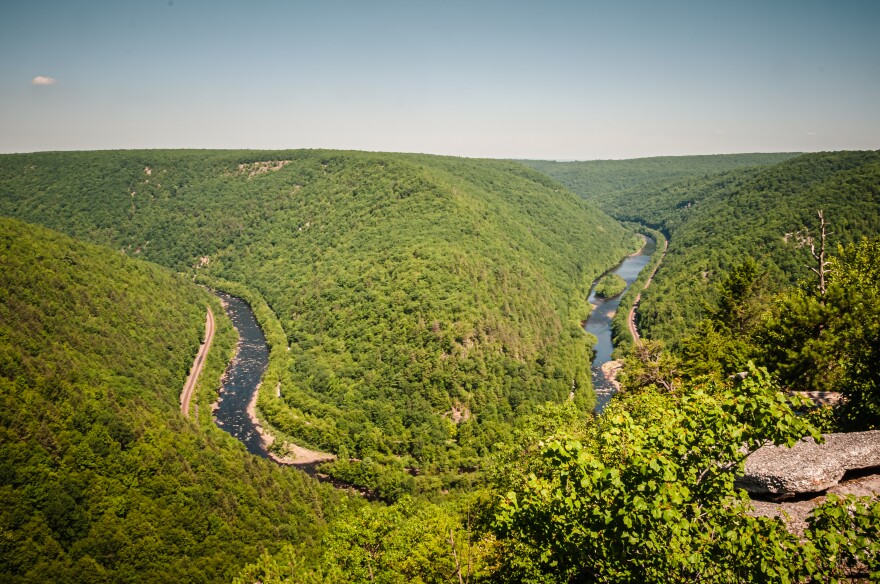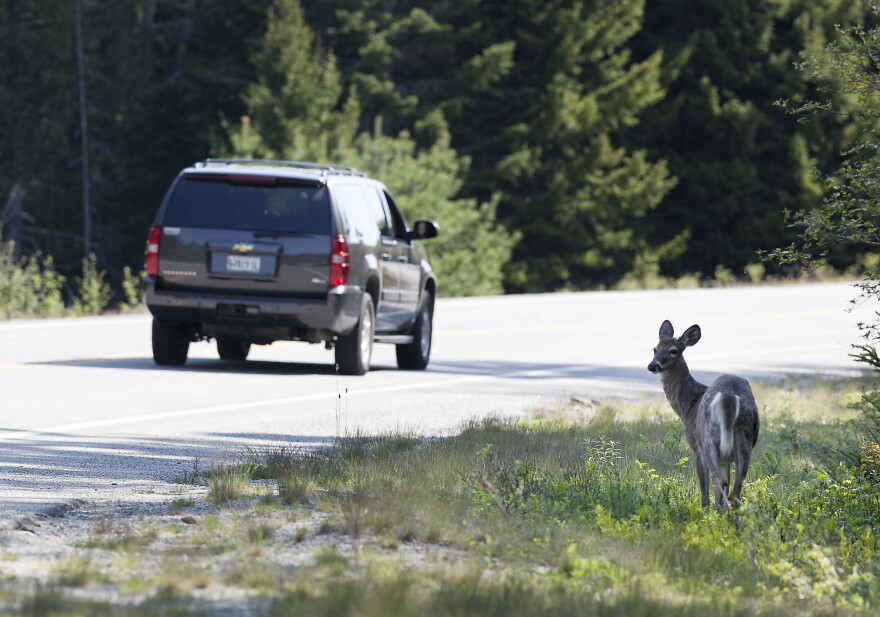BETHLEHEM, Pa. — As development continues to overtake Pennsylvania’s green spaces, wildlife and plant territories have been disconnected, divided and diminished.
It’s called “habitat fragmentation,” state environmental and legislative officials say — and they’re working to reconnect the pieces.
“Conservation connectivity is one scientifically backed way to counter habitat fragmentation,” according to a new report from the commonwealth’s Legislative Budget and Finance Committee.
“Habitat fragmentation cuts off species from critical movement between areas.
“Conservation connectivity can reduce the negative impacts of habitat fragmentation by reconnecting ‘islands’ of habitats.”
The 100-plus-page report, “The Current Status of Conservation Connectivity in Pennsylvania,” includes data on both the economic benefits of natural spaces to the commonwealth’s economy and wildlife-vehicle collisions, as well as best practices and recommendations moving forward. It also puts the commonwealth in a better position as the Federal Highway Administration begins to roll out a five-year $350 million competitive grant program to fund wildlife crossings across the country.
Environmental advocates have applauded the report, but are also urging state officials to put its recommendations into practice sooner rather than later.
"This report lays out clear next steps our leaders in Harrisburg can take to protect our wildlife for generations to come. Now, they need to act on this commonsense plan.”Stephanie Wein, clean water and conservation advocate at PennEnvironment Research and Policy Center.
“From the bobcat and black bear to the millions of songbirds that cross the Keystone State every year, Pennsylvania is blessed to be home to incredible native species,” said Stephanie Wein, clean water and conservation advocate at PennEnvironment Research and Policy Center. “This report lays out clear next steps our leaders in Harrisburg can take to protect our wildlife for generations to come.
“Now, they need to act on this commonsense plan.”
Development, collisions
Land use has been a point of contention across the Lehigh Valley as development, both residential and commercial, continues to move into the region as populations swell.
Driven by $8.1 billion in manufacturing, the Valley's gross domestic product grew to a record $50.2 billion in 2022, according to the Lehigh Valley Economic Development Corp.
However, manufacturing and development are not the commonwealth’s only economic drivers, the report’s authors argue.
“In 2022, outdoor recreation’s value added to Pennsylvania’s gross domestic product, or GDP, was $16.9 billion, or 1.8% of the commonwealth’s GDP,” according to the report. “Business and housing development have also been economic drivers. However, development has caused negative externalities, such as habitat fragmentation.”
Researchers and advocates have cited the proliferation of development across the region as main drivers for several environmental issues, including poor air quality from increased truck traffic.
And, last year, the Lehigh River was for the first time included in a national list of endangered rivers. Environmentalists pointed to “poorly planned development,” including warehouses and distribution centers as the cause of putting “the river’s health at risk.”

As development increases, animal habitats generally decrease, leading to upticks in wildlife-vehicle collisions, or WVCs. However, researchers say instances are often underreported.
“When roadways separate habitats, wildlife may be forced to cross roadways, putting humans and animals at risk,” according to the report. “In 2022, 4,533 deer-related and 217 other animal-related WVCs were reported to PennDOT (4.1% of all crashes reported to PennDOT).
“Of the WVCs reported to PennDOT, seven resulted in human fatalities.”
While the data provided by the state Department of Transportation is “a tool,” the data is limited, according to the report.
The commonwealth’s vehicle code only requires reporting all crashes involving “death, injury and/or damage to any one vehicle to such an extent that it cannot be driven from the scene without further damage and therefore requires towing.”
“According to State Farm Mutual Automobile Insurance Company estimates, there were 153,387 WVC auto insurance claims filed in Pennsylvania (July 1, 2022, through June 30, 2022),” according to the report. “Therefore, we estimated that crash data reported to PennDOT only accounted for about three percent of insurance claims estimates.
“Because not all WVCs are required to be reported, many are unreported.”
Pennsylvania is one of five states where you’re most likely to be involved in a vehicle collision with wildlife, said Alexandra Kozak, Pennsylvania field manager for the nonprofit Theodore Roosevelt Conservation Partnership.
“Establishing wildlife corridors and crossing structures at roadways, such as highway overpasses and underpasses, will help reduce collisions while improving habitat connectivity,” Kozak said.
Recommendations
There were nine recommendations included in the report, split into those for “executive action” and “legislative consideration.”
First, Gov. Josh Shapiro “should create a position to work among and between state agencies and independent commissions to direct conservation connectivity work in Pennsylvania,” according to the report.
Other recommendations include:
- The state Department of Transportation should add considerations for wildlife crossings in its long-term planning.
- The governor’s office should convene an official interagency/commission conservation connectivity working group to build on existing collaborations (including federal and non-governmental partners).
- An interagency/commission conservation connectivity working group should identify high-priority areas of conservation connectivity across the state and establish common goals.
For the Legislature, the report recommends:
- Considering requiring a study by the LBFC after PennDOT implements the “Pennsylvania Wildlife Crossings Strategic Plan and Analytical Tools” to provide an update on where Pennsylvania is at in implementing conservation connectivity procedures.
- If it deems expanding commonwealth-owned land a public policy priority in conservation connectivity, it should consider, at a minimum, an inflation adjustment to the Pennsylvania Game Commission's $400 per acre land acquisition limit.
- Considering requiring auto insurance carriers to track and provide state transportation agencies with annual data identifying wildlife-vehicle collision locations in Pennsylvania to identify hotspots.
- Considering requiring commonwealth agencies, independent commissions, contractors, etc., who remove animal carcasses from roadways to centrally track the data, including coordinates of where animal carcasses were removed, to aid in identifying wildlife-vehicle collision hotspots.
- If deemed a public policy priority, it should consider funding to develop new and preserve existing conservation corridors.
For more information, go to the Legislative Budget and Finance Committee’s website.


